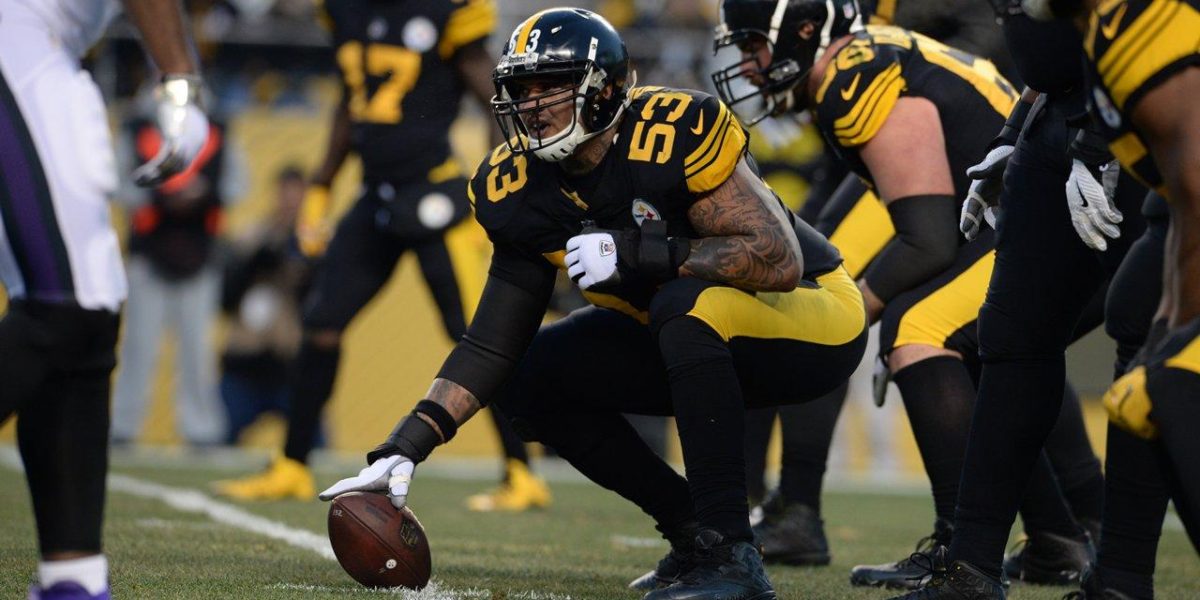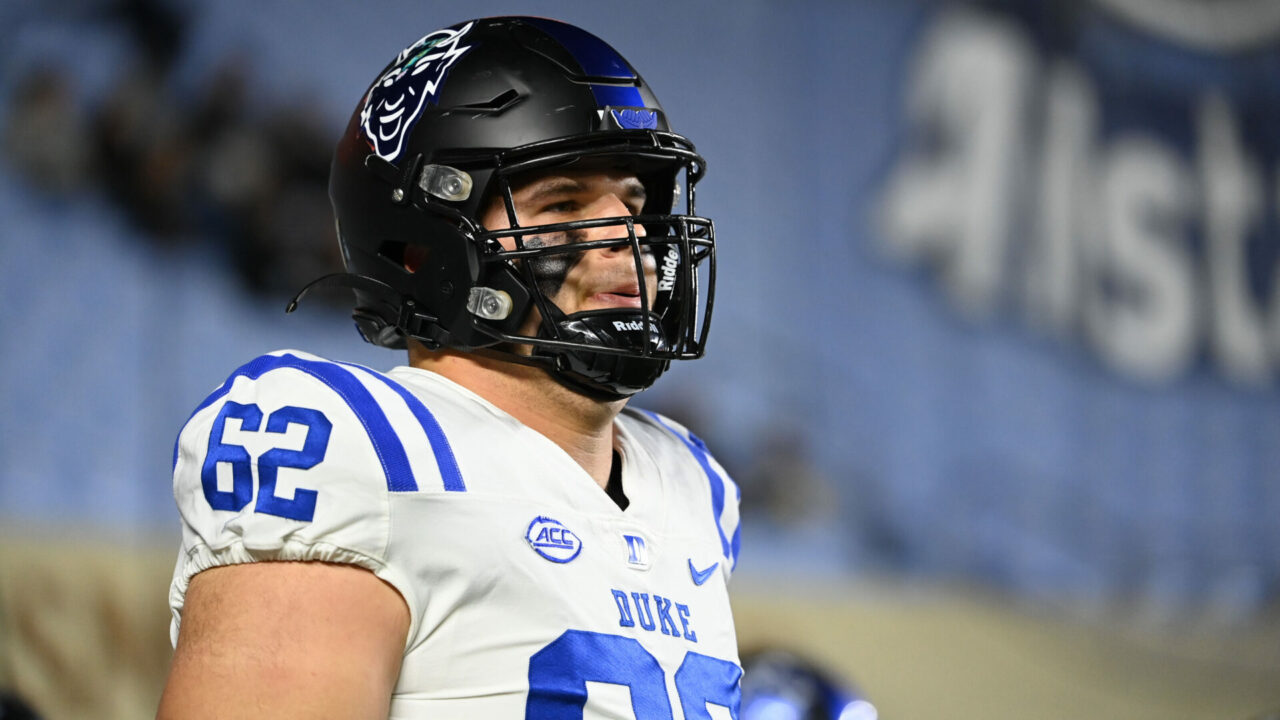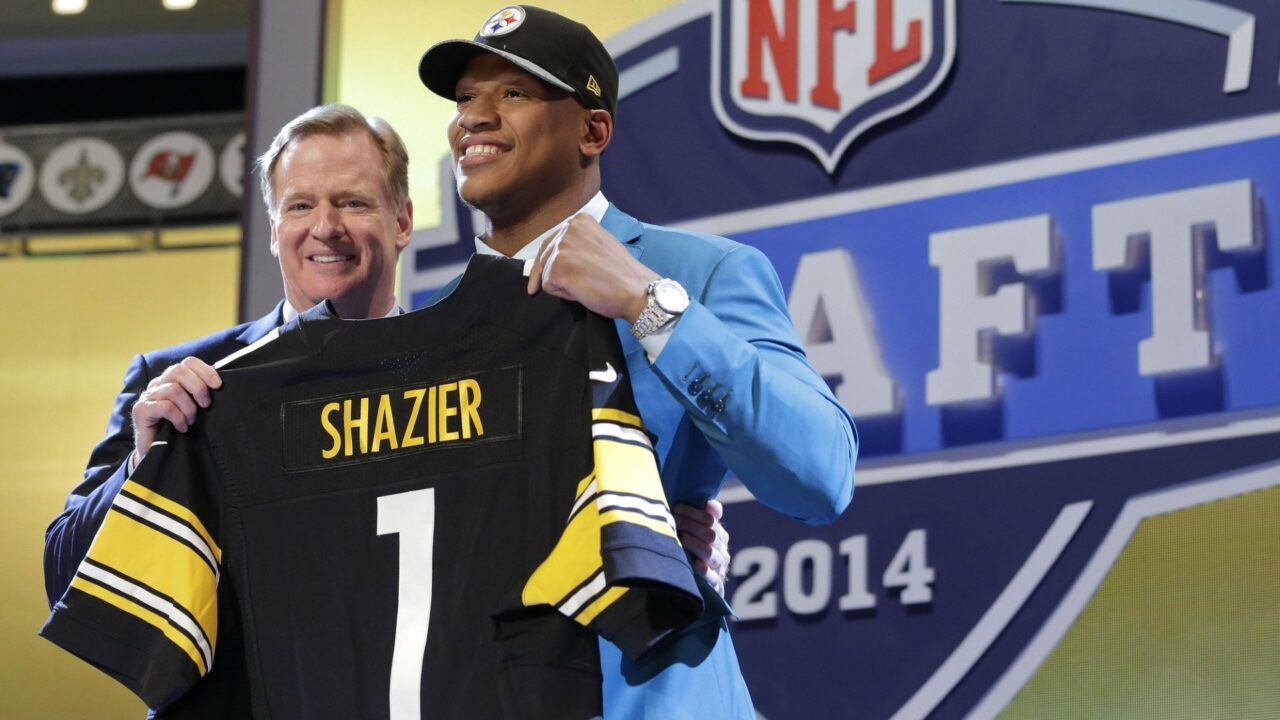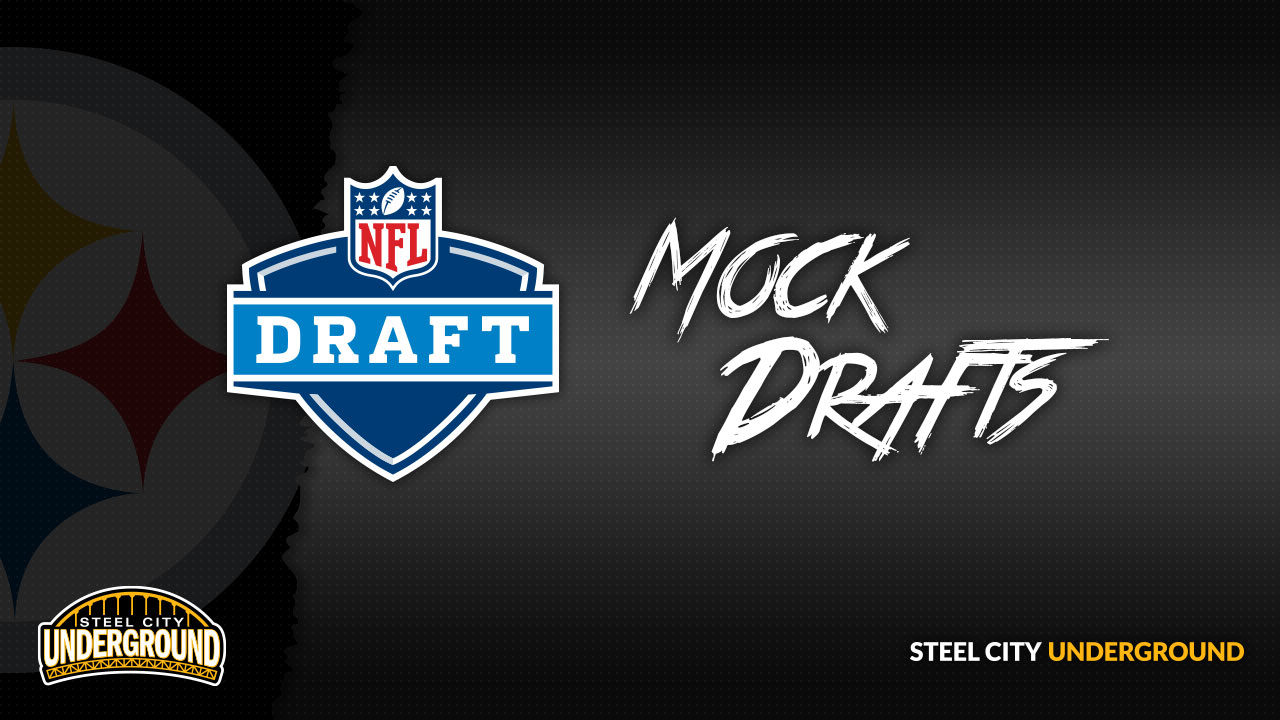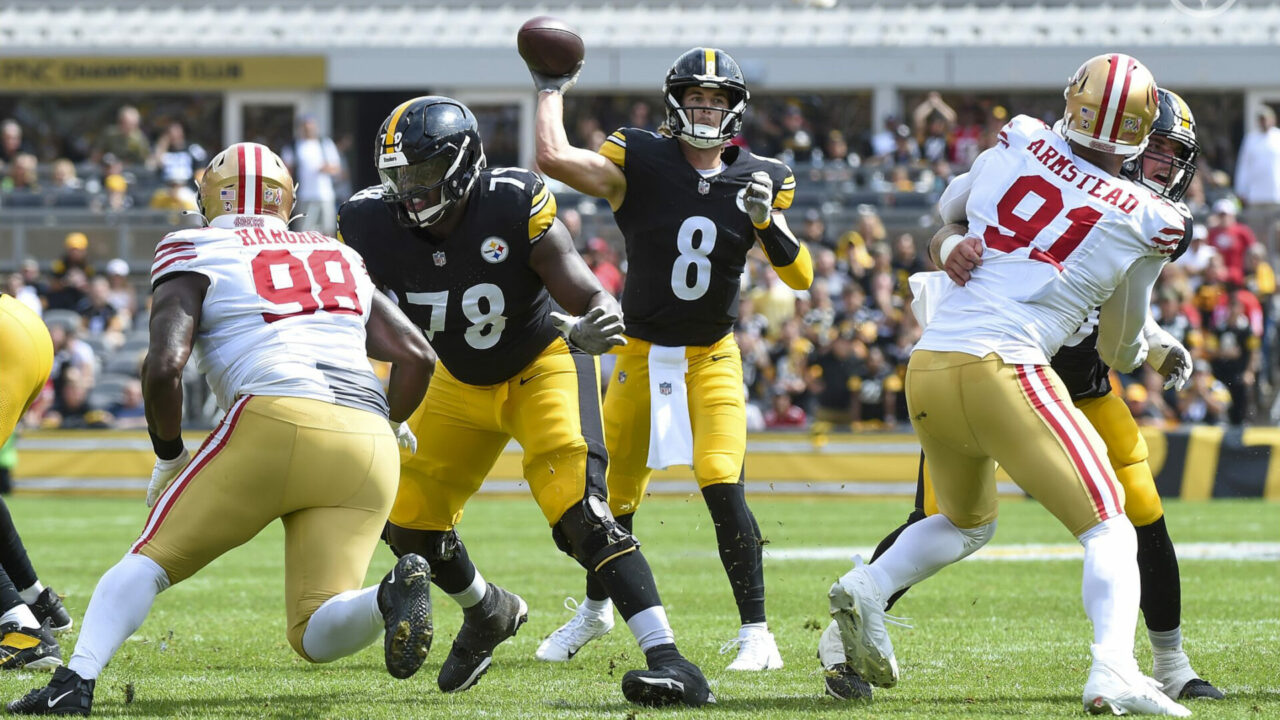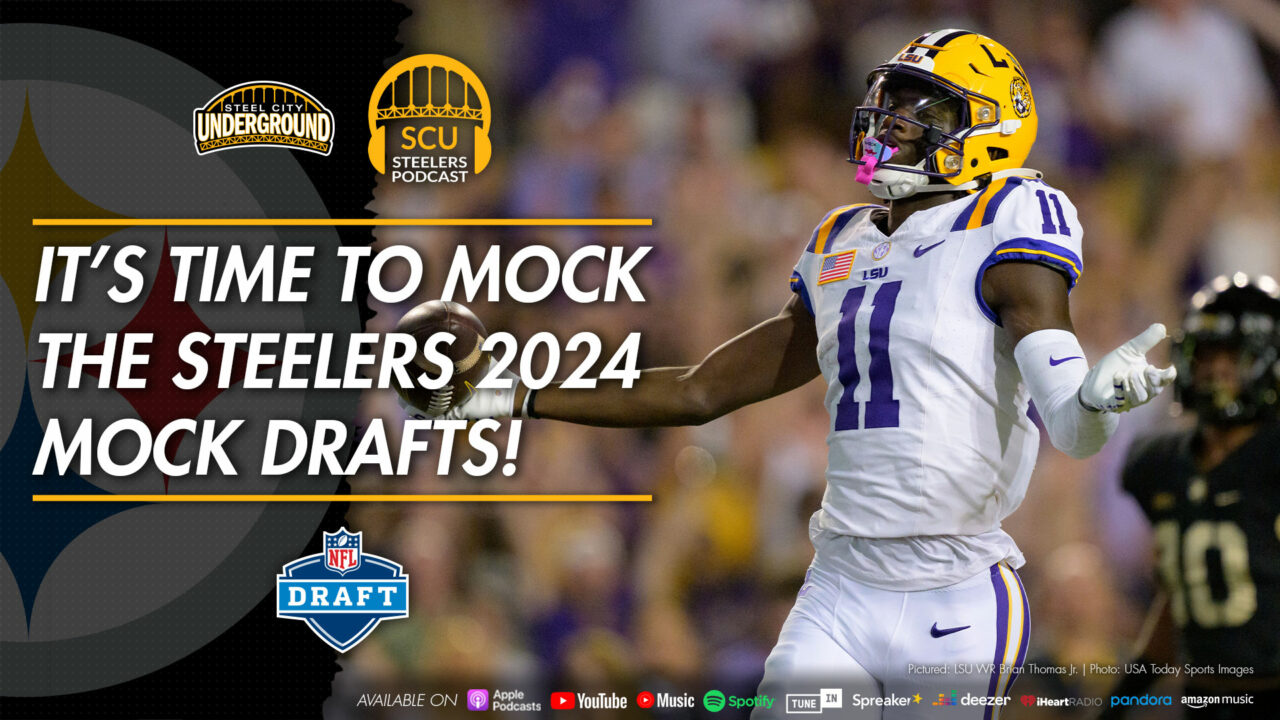Steelers offensive line the best it’s been in years
When you think about Pittsburgh Steelers, you usually think of a few things: a strong defense, and a power running game.
With the transition of the NFL into a passing league in recent years, and a number of aging stars heading off into the sunset, the Steelers defense has had trouble with it’s identity as being a shutdown unit. While that label is starting to shed, it’s the Steelers offense which had too transitioned away from smashmouth football into a finesse offensive system.
Yet, one part of that traditional hard-nosed Pittsburgh football philosophy has returned to its roots: the offensive line.
Ed Bouchette of the Pittsburgh Post-Gazette wrote a fantastic feature on how Todd Haley’s system is keeping Ben off his back more than Bruce Arians did. (I was actually jealous that Ed ran the numbers before I got this article off the idea checklist.)
The piece discusses how Big Ben used to get sacked like cities in Game of Thrones, and credits Haley, and the use of fullbacks such as Roosevelt Nix, as key components in stifling the opposition’s pass rush.
Yet, I believe there’s more to the story: a return of a healthy, and ominous, Steelers offensive line.
Like head coaches, the Steelers have always relied on a main “man in the middle”, with seldom change at the center position. From 1964 to 2006, just four men started at the spot: Ray Mansfield, Mike Webster, Dermontti Dawson, and Jeff Hartings.
Such is the greatest and consistency of the position, that Webster and Dawson are both enshrined in the Pro Football Hall of Fame.
The Steelers struggled with maintaining a solid starter for years, before selecting the first of several centerpieces to their current offensive line in the 2010 draft, taking Maurkice Pouncey in the first round.
Pouncey would prove to be an outstanding player, when bad luck “friendly fire” hits wouldn’t keep him off of the field.
Pittsburgh continued bringing in offensive line talent, picking RT Marcus Gilbert in 2011, RG David DeCastro in 2012, and further cultivating the left side of the line with deep draft picks such as T Kelvin Beachum, and undrafted standouts like Ramon Foster and Alejandro Villaneuva.
The final piece of the puzzle arrived in 2014, when former Tennesee Titans head coach, and Hall of Fame offensive lineman, Mike Munchak joined the coaching staff as their offensive line coach.
Seemingly overnight, the constant barrage of punishment bestowed upon Big Ben vanished. The addition of Le’Veon Bell rejuvenated a lackluster running game, and the Steelers were back to appearing in the postseason.
Credit this to the offensive line and coach Munchak.
Prior to Munch’s arrival, Roethlisberger had been sacked 386 times in his career dating back to 2004. There was only one season in that span between 05-13 where Ben went down less than 30 times, his second season in the league where he was sacked 23 times.
In that season he only played in 12 games.
In those 10 years before Munchak took over, Ben was sacked 38.6 times per season on average.
Among his worst seasons were those with Bruce Arians as offensive coordinator (2007-2011):
| Year | Sacks |
|---|---|
| 2004 | 30 |
| 2005 | 23 |
| 2006 | 46 |
| 2007 | 47 |
| 2008 | 46 |
| 2009 | 50 |
| 2010 | 32 |
| 2011 | 40 |
| 2012 | 30 |
| 2013 | 42 |
| 2014 | 33 |
| 2015 | 20 |
| 2016 | 17 |
It’s important to also note that Ben missed time in several seasons. Some of that was due to being a pinata for opposing defenders. He was also suspended for the first four games of the 2010 season. That year, backups Byron Leftwich, Dennis Dixon and Charlie Batch increased the team sacks total from 32 on Ben, to 43 combined.
Backups also came in the next few seasons, with Charlie Batch going down an additional 2 times in 2011, and Batch/Leftwich adding 6 more sacks to 2012’s 30 hits on Ben.
Big Ben would play every game in 2013 and 2014, where we start to see the sack numbers dip as Haley’s system takes hold, and Munchak’s mentoring enters the picture.
Now, Steelers linemen such as Pouncey and DeCastro are Pro Bowl players, and Gilbert is often considered an overlooked candidate for the same honor. Ramon Foster has maintained his starting position, and Big Al has turned into a reliable left tackle.
Even reserves such as BJ Finney and Chris Hubbard, have been called upon to lend a helping hand in the starting rotation this season. Finney’s relief appearance for Foster gave him PFF’s highest grade for the team that week, while Hubbard, a guard, astonished everyone with his play at tackle (a position he played sparingly in college, and never manned in the pros).
Hubbard’s performance at tackle was so solid, he routinely enters the game as an extra lineman, the tackle “eligible” player who is permitted to catch a pass (in other words, an over-sized tight end in jumbo packages).
The cumulative result is no longer worrying about Ben getting bounced. Sack totals dipped to 33 in 2014, 20 on Ben in 2015 and 17 on Ben in 2016: all playoff years for Pittsburgh. (Michael Vick was sacked 10 times in 2015, and Landry Jones was hit twice, increasing the overall technical total on quarterbacks to 32 last season.)
It’s no surprise then, that the 2016 Steelers nearly set a franchise mark with 21 total sacks; Roethlisberger was sacked 17 times on the year, and in two starts, Jones was only hit 4 times.
The 21 total sacks ranks as one of the best offensive line performances in franchise history. The all-time mark is 20, set in the 1986 season, and matched again in 1997.
Consider that backup Landry Jones wasn’t sacked at all against the New England Patriots, and that his four sacks came against the Cleveland Browns (in a game where the Steelers sat several starters, including Maurkice Pouncey). Also add in that the league’s highest-paid defensive line, the Miami Dolphins, only brought down black and gold QBs three times in two games (and only once in the Wild Card playoff game last week) and the dominance of the Steelers line truly starts to shine.
The line has paved the way for Le’Veon Bell’s Pro Bowl season, and his setting several league-wide and franchise marks, including the Steelers all-time single game marks for rushing in the regular and postseason. Bell also ranked fifth in the NFL with 1,268 rushing yards, third with 1,884 yards from scrimmage, and led the league with an average of 157.0 yards from scrimmage per game: the third-best average in NFL history for a single year.
Bell also became the first player in NFL history to average at least 100 rushing and 50 receiving yards per game in a single season.
According to Sports Illustrated’s Peter King, Le’Veon Bell has rushed for 1,002 yards in his last 7 games.
In the best 7-game stretch of his career, Emmitt Smith rushed for 860.
But that’s not all: against the Buffalo Bills, Bell outgained their entire offense by himself. (298 yards versus Buffalo’s 275.)
Yet, even the team MVP is quick to credit his teammates for his success:
“They’re playing superb,” Bell said. “Those guys give me a lot of room and space to make things happen and they allow me to get to the second level pretty much untouched. They deserve all the credit.”
Heading into the homestretch of the 2016-2017 NFL season, it’s the Steelers offensive line which may be most responsible for the offensive explosion we’ve seen lately. They are one of the best groups in recent years, and may go down as one of the greatest ever, in franchise history.
